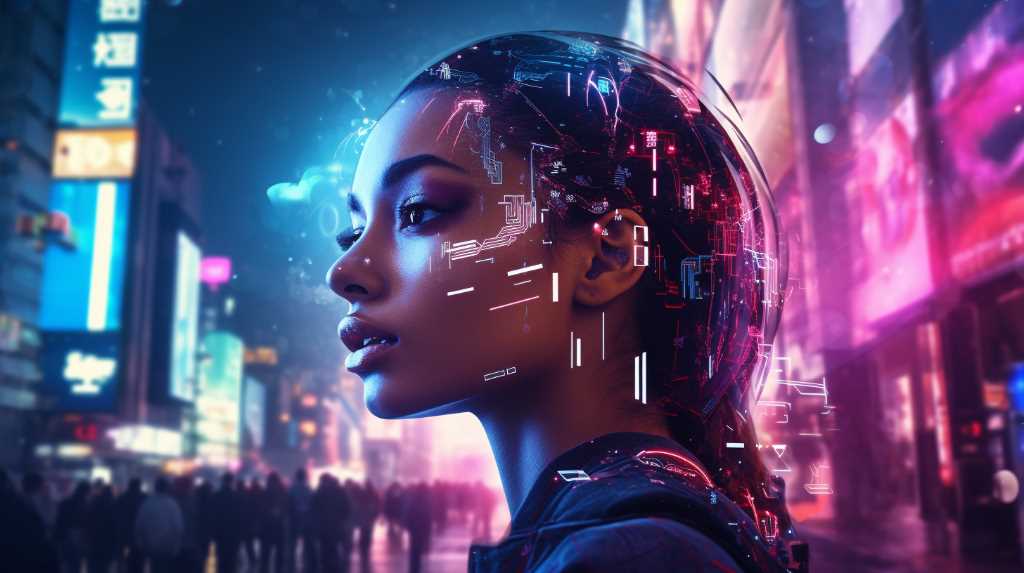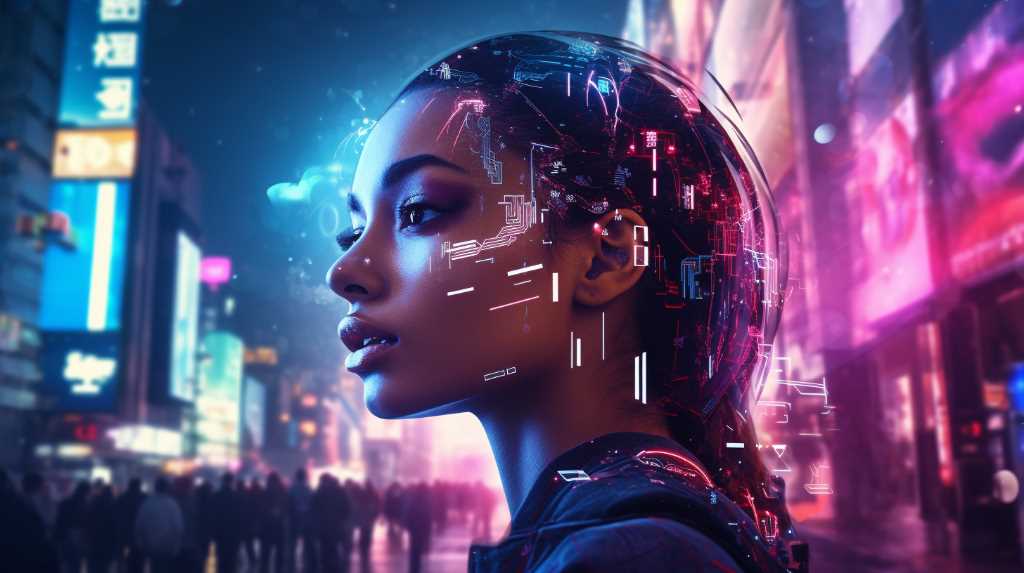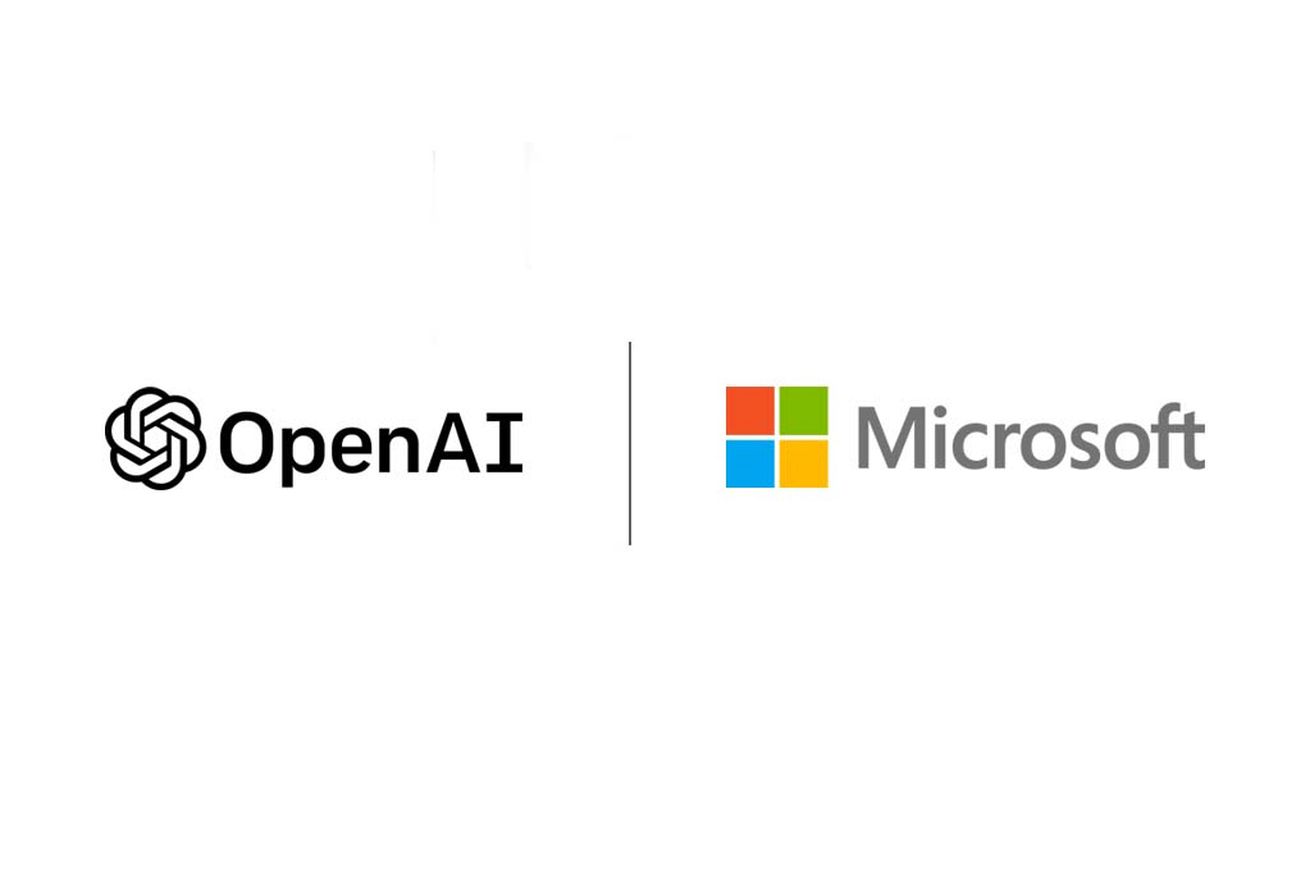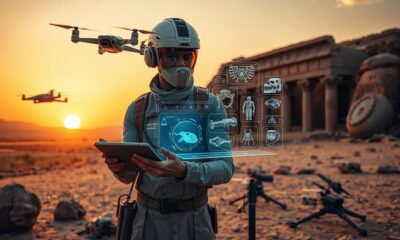AI Security
AI Security: The Game-Changer in Modern Cyber Defense

As a cybersecurity expert, I am always on the lookout for groundbreaking developments in protecting against cyber threats. And I have discovered it: AI security.
This cutting-edge technology has revolutionized the way we protect our digital assets. With AI’s intelligent threat detection, proactive threat hunting, and enhanced incident response, we are now equipped to stay one step ahead of the adversaries.
In this article, we will explore how AI security is reshaping the future of cyber defense and why mastering this technology is crucial for staying secure.
Key Takeaways
- AI technology has led to the emergence of new and sophisticated attack techniques, making AI-powered cyber attacks increasingly prevalent.
- AI-powered anomaly detection enhances threat detection capabilities, staying one step ahead of cyber attackers.
- Automated vulnerability scanning and anomaly detection, enabled by AI, allow for a proactive approach in identifying and mitigating threats.
- AI technology improves incident response and mitigation by swiftly detecting and neutralizing cyber threats, automating workflows, and enabling effective resource allocation.
The Evolution of Cyber Threats
How have cyber threats evolved with the rise of AI technology?

The impact of AI on the cyber threat landscape has been significant, leading to the emergence of new and sophisticated attack techniques. AI-powered cyber attacks are becoming increasingly prevalent, posing unique challenges to cybersecurity professionals.
With the ability to learn and adapt, AI can automate and optimize attack strategies, making them more effective and difficult to detect. These emerging cyber attack techniques leverage AI algorithms to exploit vulnerabilities, bypass security measures, and target specific individuals or organizations.
As AI technology advances, cyber threats will continue to evolve and become more complex, requiring continuous innovation and proactive defense strategies. It’s crucial for cybersecurity experts to stay updated and develop robust AI-powered defense mechanisms to mitigate the risks posed by these evolving cyber threats.
Leveraging AI for Intelligent Threat Detection
I leverage AI to intelligently detect threats in modern cyber defense. One of the key ways I achieve this is through AI-powered anomaly detection. Anomalies in network traffic, user behavior, or system activity can be indicative of potential threats.

By utilizing machine learning algorithms for threat identification, I can effectively analyze vast amounts of data and identify patterns that may indicate malicious activity. Machine learning algorithms are trained on large datasets to recognize common threat patterns and can adapt to new and evolving threats over time.
This allows me to continuously improve my threat detection capabilities and stay one step ahead of cyber attackers. By leveraging AI and machine learning, I can provide intelligent and proactive threat detection to enhance the security posture of organizations in the face of ever-evolving cyber threats.
Proactive Threat Hunting With AI Technology
Utilizing AI technology, I proactively hunt for threats in modern cyber defense. One of the key tools in my arsenal is automated vulnerability scanning. With the ability to scan systems and networks for potential weaknesses, AI enables me to identify vulnerabilities that could be exploited by attackers. This automated approach saves time and resources compared to manual vulnerability assessments.
Additionally, I leverage machine learning algorithms for anomaly detection. By analyzing vast amounts of data and learning from patterns, AI can identify abnormal behaviors that may indicate a potential threat. This proactive approach allows me to stay one step ahead of attackers and take preemptive action to protect systems and networks.

By combining automated vulnerability scanning and machine learning algorithms for anomaly detection, I’m able to detect and mitigate threats before they cause significant damage.
Transition: Now that we’ve discussed the proactive threat hunting capabilities of AI, let’s explore how it can enhance incident response and mitigation.
Enhancing Incident Response and Mitigation
By seamlessly integrating AI technology into incident response and mitigation strategies, I’m able to swiftly detect and neutralize cyber threats.
Machine learning plays a crucial role in real-time incident analysis, allowing me to analyze vast amounts of data and identify patterns that indicate potential threats. With the ability to continuously learn and adapt, AI algorithms can quickly detect anomalies and suspicious activities, enabling me to respond promptly to mitigate potential damage.

Additionally, automating incident response workflows further enhances my efficiency and effectiveness. By automating repetitive and time-consuming tasks, AI enables me to focus on critical issues, allocate resources effectively, and respond to incidents in a timely manner.
This integration of AI technology significantly improves incident response and mitigation capabilities, providing a proactive and robust defense against cyber threats.
The Future of AI Security in Cyber Defense
In the future of AI security in cyber defense, frequent advancements and innovations will revolutionize the way we protect against cyber threats. As AI continues to evolve, it raises ethical concerns that need to be addressed. One concern is the potential for AI to be used maliciously, leading to an escalation of cyber warfare. Striking the right balance between AI capabilities and ethical considerations will be crucial in ensuring the responsible use of AI in cyber defense.
Additionally, the impact of AI on job roles can’t be ignored. While AI has the potential to automate certain tasks and improve efficiency, it may also lead to job displacement. Cybersecurity professionals will need to adapt and acquire new skills to work alongside AI systems. Collaboration between humans and AI will become essential in order to effectively detect, prevent, and respond to cyber threats.

Frequently Asked Questions
How Does the Use of AI in Cyber Defense Impact the Speed and Accuracy of Threat Detection and Response?
The use of AI in cyber defense greatly impacts the speed and accuracy of threat detection and response. It enhances real-time threat analysis, improving efficiency in cyber defense by rapidly identifying and mitigating potential threats.
What Are Some Potential Limitations or Challenges in Implementing AI Technology for Proactive Threat Hunting?
Implementing AI technology for proactive threat hunting presents limitations and challenges. Scalability and data quality are crucial factors to consider. As an AI expert, I analyze these issues meticulously to ensure optimal performance and accuracy.
Can Ai-Powered Incident Response and Mitigation Systems Adapt and Learn From New Types of Cyber Threats?
Yes, AI-powered incident response and mitigation systems can adapt and learn from new types of cyber threats. Their adaptability is achieved through machine learning algorithms that analyze and respond to emerging threats effectively.
What Are the Potential Ethical Considerations and Concerns Surrounding the Use of AI in Cybersecurity?
Ethical considerations and concerns surrounding the use of AI in cybersecurity are significant. As an AI security expert, I analyze potential risks and implications, ensuring that the use of AI aligns with ethical guidelines and safeguards against unintended consequences.

How Might AI Technology Evolve in the Future to Further Enhance Cyber Defense Capabilities?
In the future, AI technology will evolve to enhance cyber defense capabilities by incorporating advanced machine learning algorithms, real-time threat detection, and autonomous response systems, revolutionizing the way we protect against cyber threats.
Conclusion
In the rapidly evolving landscape of cyber threats, AI Security emerges as a game-changer, revolutionizing modern cyber defense. By leveraging intelligent threat detection, proactive threat hunting, and enhancing incident response and mitigation, AI technology empowers organizations to stay one step ahead of adversaries.
The future of AI Security holds immense potential, as it continues to evolve and adapt to ever-changing threats, providing a robust defense mechanism. Embracing this innovative technology is crucial for organizations aiming to safeguard their digital assets effectively.
Hanna is the Editor in Chief at AI Smasher and is deeply passionate about AI and technology journalism. With a computer science background and a talent for storytelling, she effectively communicates complex AI topics to a broad audience. Committed to high editorial standards, Hanna also mentors young tech journalists. Outside her role, she stays updated in the AI field by attending conferences and engaging in think tanks. Hanna is open to connections.
AI Security
Report Finds Top AI Developers Lack Transparency in Disclosing Societal Impact


Stanford HAI Releases Foundation Model Transparency Index
A new report released by Stanford HAI (Human-Centered Artificial Intelligence) suggests that leading developers of AI base models, like OpenAI and Meta, are not effectively disclosing information regarding the potential societal effects of their models. The Foundation Model Transparency Index, unveiled today by Stanford HAI, evaluated the transparency measures taken by the makers of the top 10 AI models. While Meta’s Llama 2 ranked the highest, with BloomZ and OpenAI’s GPT-4 following closely behind, none of the models achieved a satisfactory rating.
Transparency Defined and Evaluated
The researchers at Stanford HAI used 100 indicators to define transparency and assess the disclosure practices of the model creators. They examined publicly available information about the models, focusing on how they are built, how they work, and how people use them. The evaluation considered whether companies disclosed partners and third-party developers, whether customers were informed about the use of private information, and other relevant factors.
Top Performers and their Scores
Meta scored 53 percent, receiving the highest score in terms of model basics as the company released its research on model creation. BloomZ, an open-source model, closely followed at 50 percent, and GPT-4 scored 47 percent. Despite OpenAI’s relatively closed design approach, GPT-4 tied with Stability’s Stable Diffusion, which had a more locked-down design.
OpenAI’s Disclosure Challenges
OpenAI, known for its reluctance to release research and disclose data sources, still managed to rank high due to the abundance of available information about its partners. The company collaborates with various companies that integrate GPT-4 into their products, resulting in a wealth of publicly available details.

Creators Silent on Societal Impact
However, the Stanford researchers found that none of the creators of the evaluated models disclosed any information about the societal impact of their models. There is no mention of where to direct privacy, copyright, or bias complaints.
Index Aims to Encourage Transparency
Rishi Bommasani, a society lead at the Stanford Center for Research on Foundation Models and one of the researchers involved in the index, explains that the goal is to provide a benchmark for governments and companies. Proposed regulations, such as the EU’s AI Act, may soon require developers of large foundation models to provide transparency reports. The index aims to make models more transparent by breaking down the concept into measurable factors. The group focused on evaluating one model per company to facilitate comparisons.
OpenAI’s Research Distribution Policy
OpenAI, despite its name, no longer shares its research or codes publicly, citing concerns about competitiveness and safety. This approach contrasts with the large and vocal open-source community within the generative AI field.
The Verge reached out to Meta, OpenAI, Stability, Google, and Anthropic for comments but has not received a response yet.
Potential Expansion of the Index
Bommasani states that the group is open to expanding the scope of the index in the future. However, for now, they will focus on the 10 foundation models that have already been evaluated.
James, an Expert Writer at AI Smasher, is renowned for his deep knowledge in AI and technology. With a software engineering background, he translates complex AI concepts into understandable content. Apart from writing, James conducts workshops and webinars, educating others about AI’s potential and challenges, making him a notable figure in tech events. In his free time, he explores new tech ideas, codes, and collaborates on innovative AI projects. James welcomes inquiries.
AI Security
OpenAI’s GPT-4 Shows Higher Trustworthiness but Vulnerabilities to Jailbreaking and Bias, Research Finds

New research, in partnership with Microsoft, has revealed that OpenAI’s GPT-4 large language model is considered more dependable than its predecessor, GPT-3.5. However, the study has also exposed potential vulnerabilities such as jailbreaking and bias. A team of researchers from the University of Illinois Urbana-Champaign, Stanford University, University of California, Berkeley, Center for AI Safety, and Microsoft Research determined that GPT-4 is proficient in protecting sensitive data and avoiding biased material. Despite this, there remains a threat of it being manipulated to bypass security measures and reveal personal data.

Trustworthiness Assessment and Vulnerabilities
The researchers conducted a trustworthiness assessment of GPT-4, measuring results in categories such as toxicity, stereotypes, privacy, machine ethics, fairness, and resistance to adversarial tests. GPT-4 received a higher trustworthiness score compared to GPT-3.5. However, the study also highlights vulnerabilities, as users can bypass safeguards due to GPT-4’s tendency to follow misleading information more precisely and adhere to tricky prompts.
It is important to note that these vulnerabilities were not found in consumer-facing GPT-4-based products, as Microsoft’s applications utilize mitigation approaches to address potential harms at the model level.
Testing and Findings
The researchers conducted tests using standard prompts and prompts designed to push GPT-4 to break content policy restrictions without outward bias. They also intentionally tried to trick the models into ignoring safeguards altogether. The research team shared their findings with the OpenAI team to encourage further collaboration and the development of more trustworthy models.

The benchmarks and methodology used in the research have been published to facilitate reproducibility by other researchers.
Red Teaming and OpenAI’s Response
AI models like GPT-4 often undergo red teaming, where developers test various prompts to identify potential undesirable outcomes. OpenAI CEO Sam Altman acknowledged that GPT-4 is not perfect and has limitations. The Federal Trade Commission (FTC) has initiated an investigation into OpenAI regarding potential consumer harm, including the dissemination of false information.
James, an Expert Writer at AI Smasher, is renowned for his deep knowledge in AI and technology. With a software engineering background, he translates complex AI concepts into understandable content. Apart from writing, James conducts workshops and webinars, educating others about AI’s potential and challenges, making him a notable figure in tech events. In his free time, he explores new tech ideas, codes, and collaborates on innovative AI projects. James welcomes inquiries.
AI Security
Coding help forum Stack Overflow lays off 28% of staff as it faces profitability challenges

Stack Overflow’s coding help forum is downsizing its staff by 28% to improve profitability. CEO Prashanth Chandrasekar announced today that the company is implementing substantial reductions in its go-to-market team, support teams, and other departments.
Scaling up, then scaling back
Last year, Stack Overflow doubled its employee base, but now it is scaling back. Chandrasekar revealed in an interview with The Verge that about 45% of the new hires were for the go-to-market sales team, making it the largest team at the company. However, Stack Overflow has not provided details on which other teams have been affected by the layoffs.
Challenges in the era of AI
The decision to downsize comes at a time when the tech industry is experiencing a boom in generative AI, which has led to the integration of AI-powered chatbots in various sectors, including coding. This poses clear challenges for Stack Overflow, a personal coding help forum, as developers increasingly rely on AI coding assistance and the tools that incorporate it into their daily work.

Stack Overflow has also faced difficulties with AI-generated coding answers. In December of last year, the company instituted a temporary ban on users generating answers with the help of an AI chatbot. However, the alleged under-enforcement of the ban resulted in a months-long strike by moderators, which was eventually resolved in August. Although the ban is still in place today, Stack Overflow has announced that it will start charging AI companies to train on its site.
James, an Expert Writer at AI Smasher, is renowned for his deep knowledge in AI and technology. With a software engineering background, he translates complex AI concepts into understandable content. Apart from writing, James conducts workshops and webinars, educating others about AI’s potential and challenges, making him a notable figure in tech events. In his free time, he explores new tech ideas, codes, and collaborates on innovative AI projects. James welcomes inquiries.
-

 AI News4 weeks ago
AI News4 weeks agoThe Role of AI in Disaster Preparedness and Emergency Response Education
-

 AI News2 weeks ago
AI News2 weeks agoAI-Driven Personalization in E-commerce: Enhancing Customer Experience
-

 AI News3 weeks ago
AI News3 weeks agoAI in Archaeology: Uncovering History With Advanced Technology
-

 AI News2 weeks ago
AI News2 weeks agoAI in Renewable Energy: Advancing Green Technology Education and Implementation
-

 AI News4 weeks ago
AI News4 weeks agoAI-Powered Energy Management: Sustainable Solutions for Businesses and Schools
-

 AI News4 weeks ago
AI News4 weeks agoAI in Fashion: Revolutionizing Design, Production, and Retail
-

 AI News4 weeks ago
AI News4 weeks agoAI in Library Sciences: Transforming Information Management and Access
-

 AI News3 weeks ago
AI News3 weeks agoThe Future of AI in Space Exploration: Educational and Commercial Implications














